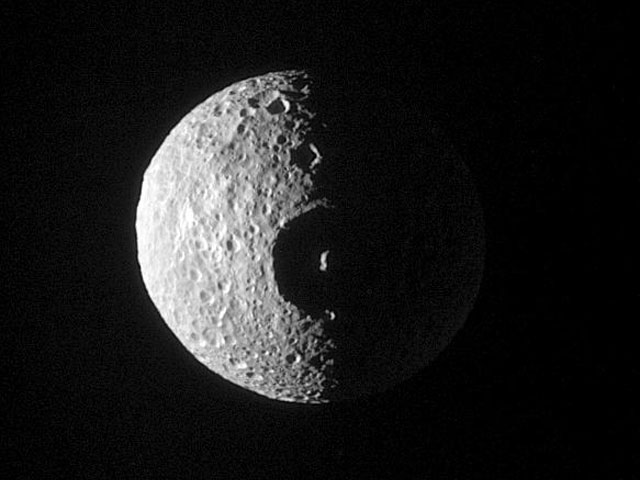Crater on Mimas

Explanation:
Whatever hit Mimas nearly destroyed it.
What remains is one of the
largest impact craters on one of
Saturn's smallest moons.
The crater, named Herschel after the 1789 discoverer of Mimas,
Sir William Herschel, spans about 130 kilometers and is
pictured above in the dramatic light of its
terminator.
Mimas'
low mass produces a surface gravity just strong enough
to create a spherical body but weak enough to allow
such relatively large surface features.
Mimas is made
of mostly water ice with a smattering of rock - so it is
accurately described as a big dirty snowball.
The
above image was taken during the 2005 January flyby of the
robot spacecraft Cassini now in
orbit
around Saturn.
Authors & editors:
Robert Nemiroff
(MTU) &
Jerry Bonnell
(USRA)
NASA Web Site Statements, Warnings,
and Disclaimers
NASA Official: Jay Norris.
Specific
rights apply.
A service of:
LHEA at
NASA /
GSFC
& Michigan Tech. U.

